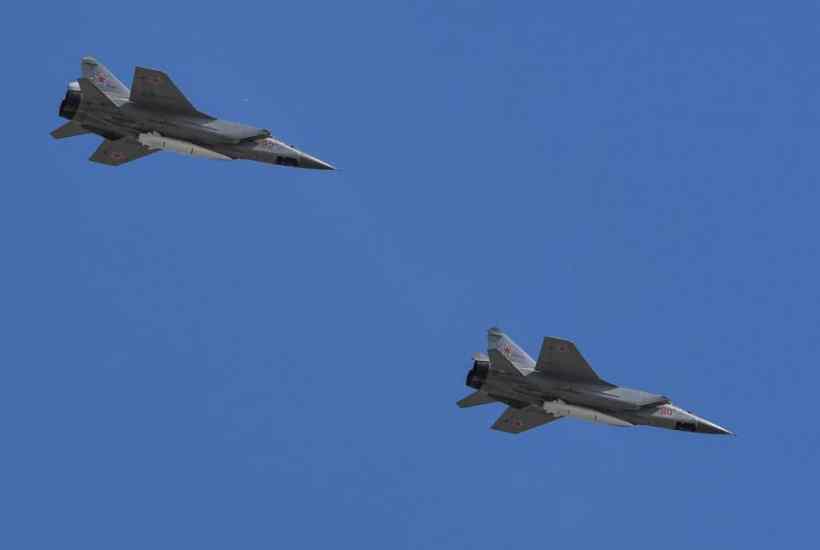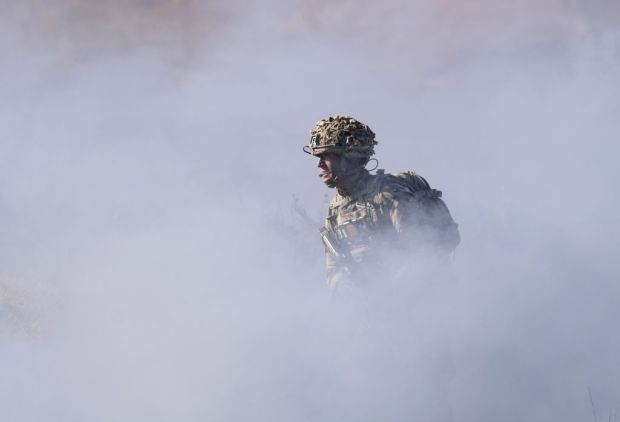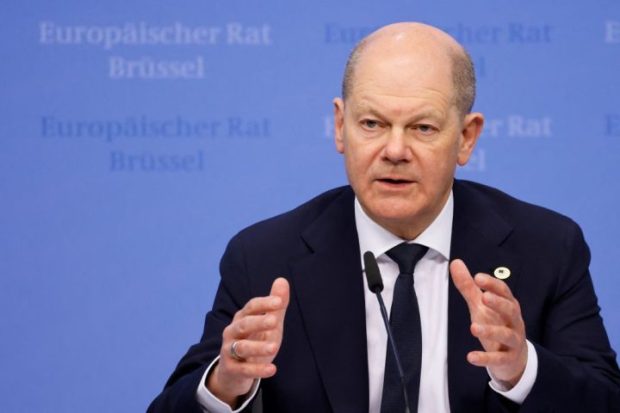Putin, like many other belligerent autocrats, does like his Wunderwaffen, or ‘wonder weapons.’ Now it appears he’s even used one in an act of wasteful overkill in Ukraine: using the hypersonic Kh-47M2 Kinzhal (Dagger) missile to apparently destroy an arms depot in western Ukraine.
The Kinzhal was one of the six ‘magic weapons’ Putin unveiled in a moderately-deranged section of his 2018 state-of-the-nation address, which was memorably enlivened by a computer animation of what looked like a nuclear attack on Donald Trump’s Mar-a-Lago resort in Florida.
As well as the Kinzhal, which along with the RS-28 Sarmat intercontinental ballistic missile was already in service, the magic weapons included the Avangard hypersonic nuclear warhead, a truck-based surface-to-air laser system later named Peresvet, and two doomsday weapons, the Poseidon nuclear-armed underwater drone-torpedo and the Burevestnik nuclear-powered cruise missile (which could fly around the world, but emit a plume of radioactive exhaust all the way).
Only a single Kinzhal had been fired in anger to date, in Syria, and more than anything else as a test of concept. After all, against most targets, a Kinzhal – which is launched from a Tu-22M3 bomber or specially-modified MiG-31K high-altitude jet, and can reach Mach 10 as it flies more than 1,200 miles, dodging on the way to defy air defences – is ridiculous overkill.
The target was reportedly a large underground arsenal in the village of Delyatyn in the Ivano-Frankivsk region, although some reports are questioning the Russian claim. Even if it is not armed with a nuclear warhead, a Kinzhal carries 500 kg of high explosive, which is certainly enough to deliver a serious punch to an underground bunker. But a KAB-1500L laser-guided bomb, for example, has over a tonne of high explosives in its warhead, and is a damn sight cheaper.
This was likely another example of Putin’s signalling – which is the technical euphemism for attempted intimidation – as he displays a system in which Russia has a real technological edge.
Much like the televised orders to his defence minister to bring the nuclear forces ‘to a special mode of combat duty’ (which actually turned out to mean very little), unsubtle references to nuclear and nuclear-capable systems are intended presumably to make the West temper its support for Ukraine.
Back in February, after all, Kinzhaland Tsirkon hypersonic missiles (the latter being an anti-shipping system) were launched during the Grom (Thunder) strategic exercises, interpreted in the West as a show of force intended to worry Kyiv and deter the West ahead of the invasion.
Yet the use of the Kinzhal may also reflect the way that Moscow’s stocks of other precision-guided systems appear to be running low. Some speculate that they are simply being conserved for some future offensive, but given that at the best of times the Russian defence industrial sector has trouble turning out the most advanced systems at the required rate, it seems more likely that they are simply being expended more quickly than they can be restocked. Aircraft are flying with ‘dumb’ rather than ‘smart’ bombs, for example, and use of the 152mm 2K25 Krasnopol laser-guided artillery shell has been much less frequent than anticipated.
Given that Russia still has not managed to establish air superiority, then striking a hardened target in the west of the country was therefore a job for a missile. Up to now, the Russians have largely been using Iskander tactical ballistic missiles and Kalibr cruise missiles, both of which have proven highly effective (and can also be armed with nuclear warheads). Yet according to the Ukrainian General Staff, in the first 20 days of the war, the Russians have managed to burn through near enough their entire stock of both missiles.
Therefore an ostensible demonstration of power and capability might also, perversely, prove to be a demonstration of exhaustion of options and resources. Of course, the sad truth is that if the Russians really are running low on precision munitions, that will not stop them fighting, just see them using less accurate firepower – of the sort that risks even greater civilian casualties – in their stead.
Got something to add? Join the discussion and comment below.
Get 10 issues for just $10
Subscribe to The Spectator Australia today for the next 10 magazine issues, plus full online access, for just $10.



















Comments
Don't miss out
Join the conversation with other Spectator Australia readers. Subscribe to leave a comment.
SUBSCRIBEAlready a subscriber? Log in